Almonds are a nut or a bone, how does it grow and what properties does it have?
The inhabitants of the planet knew about almonds even before our era, they even domesticated the plant in those distant times. The fruit of the tree with edible seed is appreciated. As soon as they do not call it: both a nut and an almond stone. There are two types of almonds: bitter and sweet, which differ in taste and useful properties.
If earlier almonds only the inhabitants of the Mediterranean, Central Asia enjoyed themselves, then in our time it is not considered an exotic product. Almonds are produced on a large scale. Californian plantations are in the first place in the production of almonds. The tree is successfully grown in other countries with warm and humid climates.
Content:
- Almonds - what are they?
- Where and how do almonds grow?
- What beneficial properties does it have?
- Where and how are almonds used?
- Harm and contraindications
- How to choose almonds?
- Storage methods and rules
Almonds - what are they?
Many types of nuts are known to grow on trees. Their difference from other fruits is a stiffened hard shell, inside which there is a delicious nut. A tree, a shrub on which the fruit is formed, is also called a nut or hazel.
It is correct to call the fruit of an almond both a nut and a bone.
The almond tree belongs to the Rosaceae family, like many horticultural crops. The plant is close in structure to peaches, apricots. Only his fruit is slightly different from his fellows. It is similar in shape to plum, but its pulp is inedible.
When ripe, the pericarp is easily separated from the bone, inside which is the nucleus. They call it a bone, or a drupe. For almonds, the definition of a nut is commonly used, since it contains a lot of fatty acids, essential oils, as in other nuts.
Where and how do almonds grow?
The almond tree is cultivated to obtain a nutritious, nutritious kernel. Tree plantations are widespread not only on the American continent, but also in African and Asian countries.
A light-loving tree lives for a long time, reaching an age of one hundred years.
Powerful root system plants allow it to grow on rocky slopes, scarce soils. Almonds are not afraid of frost or heat. A decrease in air temperature is dangerous only for young shoots blooming in early spring. Covered with a white-pink cloud of flowers, almonds attract bees with their scent. Insects are used to pollinate the plant.
After two to three months, drupes with a green and poisonous pericarp appear in place of the inflorescences. When ripe, it is easily separated from the seed with a tasty and healthy kernel. Everyone knows about the benefits of almonds, and therefore they grow it in large quantities, supplying consumers with a delicious product.
What beneficial properties does it have?
Both sweet and bitter almonds benefit a person, curing many ailments. Consume sweet nut kernels to:
- strengthen the body after a serious illness
- restore the function of the stomach in case of ulcers caused by increased acidity of gastric juice
- improve the functioning of the nervous system
- relieve coughing attacks in asthmatics, heavy smokers
- regulate the work of the heart
- clear blood vessels of cholesterol
- normalize blood composition, eliminating anemia
Kernels with a high calorie content, with a high content of vegetable proteins and carbohydrates are recommended to be included in the menu for vegetarians. They are useful for pregnant women, helping to form the skeletal system of the fetus. Roasted almonds eliminate spasms in case of intestinal diseases, painful urination.
Bitter almonds are not recommended to feast on, since the high content of hydrocyanic acid in it leads to poisoning.
But bitter almond water is used by people suffering from pulmonary diseases, bronchial asthma, and insomnia. Water with 25% acid content reduces pain in patients with gastralgia, eliminates cough, and reduces the gag reflex.
The healing properties of almonds are contained in its composition, where there are many B vitamins, carotene, up to 60 percent fatty oil. The nuclei are rich in calcium, iron, barium, manganese. They have enough glucose, tannins, choline.
Where and how are almonds used?
Almond seeds are used in medicine, cooking, and cosmetology:
- In folk medicine, pathologies are actively cured with almond oil, prepared by the method of cold pressing. In acute otitis media, 4–5 drops are instilled into the ear, eliminating pain. Sulfur plugs in the ears are diluted with oil.
- An oily liquid is used as an external agent, lubricating the areas of the skin affected with ulcers with it. If you add a teaspoon of ether, lavender and mint to two teaspoons of almond oil, you get a mixture that is rubbed into the temples and the back of the neck. This will help relieve an impending migraine attack.
- After mixing crushed almond grains with honey, creeping ulcers and herpes are smeared with the resulting product. A mixture of nuts, vinegar and wine helps with shingles.
- Milk is prepared from almonds. Fifty grams of chopped nuts are poured with boiled milk (250 milliliters), insisted for an hour. Having strained, consume 50 milliliters four times a day. Almond milk helps to stop a strong cough, soothe stomach pains, stop vomiting.
- Patients with jaundice are advised to eat sweet almond nuts, starting with five kernels before meals three times a day. Then increase the single dose to 15 seeds, gradually adding five nuts a day.
- The benefits of almonds for hair are known. Almond oil is used to lubricate the hair, rubbing the product into the roots. After several procedures, the hair will become stronger and grow better. It is especially useful to use oil for those who often dye their hair, do a perm. Almonds will saturate the hair dried with chemicals with useful elements, "revive" them.
- In cooking, almonds are added not only to various pastries, cakes, but also to fish and meat dishes. The useful components of the nut are better absorbed if it is combined with foods rich in ascorbic acid. Taste almonds in chocolate, with milk, honey.
Almonds are a common food that is useful to consume every day, taking into account contraindications.
Harm and contraindications
As in any nuts, almond kernels contain a lot of oil, which is harmful to people prone to obesity. You can not include a product in the menu for those whose body does not tolerate the components of the nut, may give an allergic reaction to it. The product is contraindicated in case of increased heartbeat, overexcitation.
Do not mix kernels with other nuts. It will be difficult for the body to digest large amounts of fat and protein.
You need to know the difference between sweet and bitter almonds. After all, hydrocyanic acid in bitter nuclei leads to severe poisoning, even death. Even two or three seeds used for food will harm children. If poisoning occurs, they urgently call a doctor, washing the stomach with a solution of potassium permanganate before his arrival. Including almonds in the diet, it is necessary to check the body's reaction to it. Having eaten one or two grains, they look for irritation on the skin, itching. Only in the absence of a reaction can you safely eat almonds, but in moderation.
How to choose almonds?
The benefits of almonds will be if they are fresh and mature. Usually in supermarkets there is a nut in a package, so its freshness can only be determined by the date of manufacture. Pay attention to the integrity of the packaging. Nuts should be dry roasted without adding oil.
Choosing raw nuts, they get them in the absence of mold. The beans should look fresh and free of rusty deposits. Determine the quality of the product by smell and taste. The bitter taste should alert the buyer. Better to refuse such food. Fry the kernels of the seeds, having previously cleaned, in a dry frying pan. A properly selected and cooked nut will only benefit.
Storage methods and rules
There are a number of rules that will help you keep almonds at home:
- Place dry nuts in a container with a lid or in a sealed glass jar. Care must be taken to ensure that the containers are not wet.
- Do not keep almonds in the sun. Containers with kernels are placed in a dark, cool place. A refrigerator is also suitable for these purposes.
- You can put the nuts in a container or bag and freeze.
- Shredded kernels are stored for less time than whole kernels.
Nuts retain their freshness for a year if they are properly stored in the refrigerator. In the closet, almonds will last no more than six months. Do not constantly defrost and re-freeze the food. It will quickly start to deteriorate.
Only fresh product can be eaten, if mold, bitter taste appears, it is better to destroy the product.
From almonds prepare and tincture, adding it to wines, liqueurs, alcohol. It is necessary to know exactly the recipe for cooking, the norm of the nut, so that there is no poisoning with the drink. Storage of almonds is carried out in accordance with the rules.
More information can be found in the video:



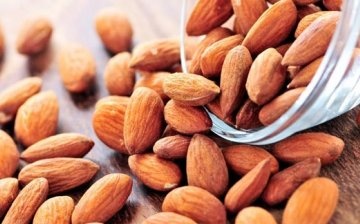
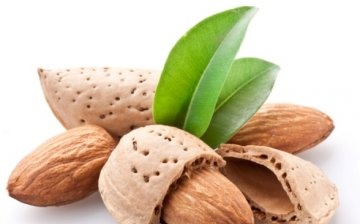
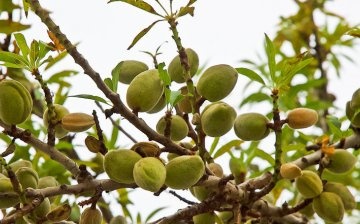
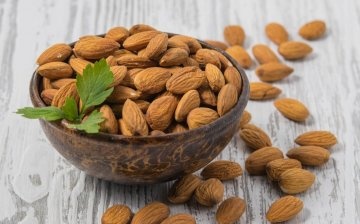
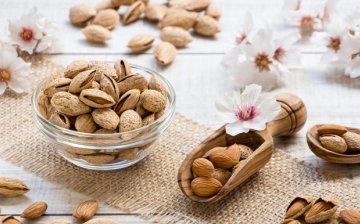

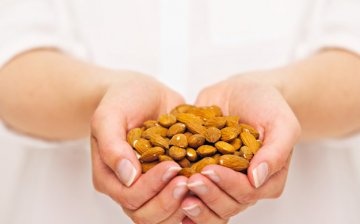







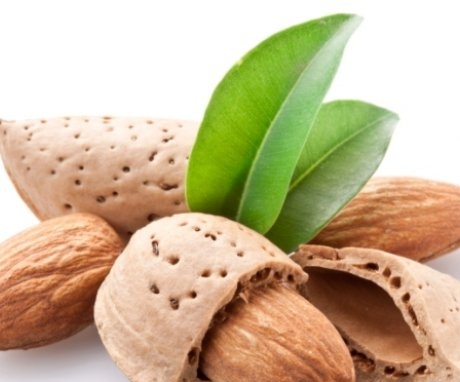
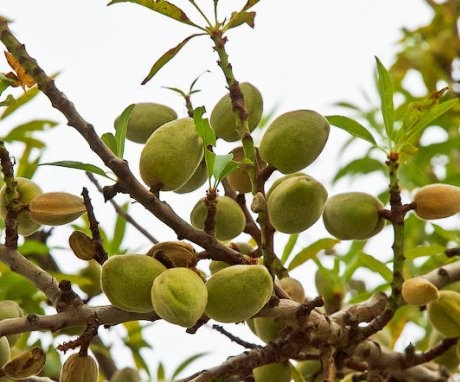
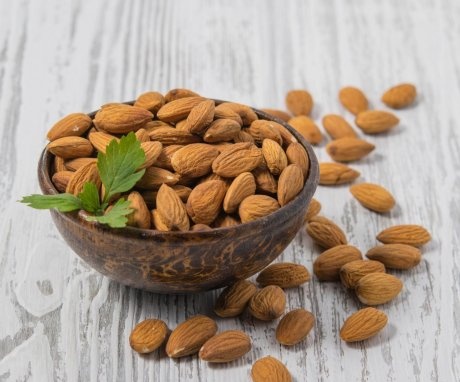
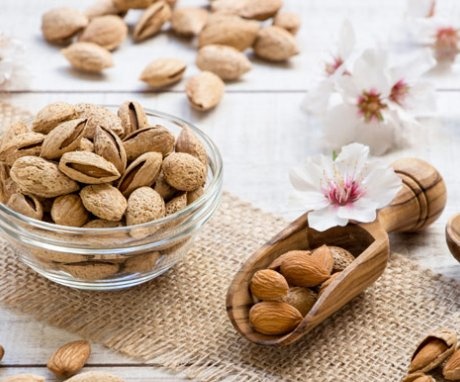

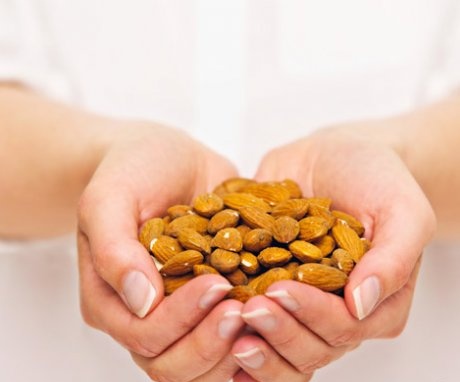
This plant has very tasty and healthy fruits, but unfortunately, it is completely impossible to cultivate them in our latitudes. And what can be bought in a store or in the markets does not always meet all quality requirements.
I love almonds, I use them mainly in making desserts and just eat nuts. Of course, I know about the benefits, but still I am of the opinion that everything should be in moderation, so I try not to overeat.
Almonds are healthy, like many other nuts, but you need to eat them in moderation, if only because they are high in calories. He, like a peach, is poorly adapted to our temperate climate, loves warmth.